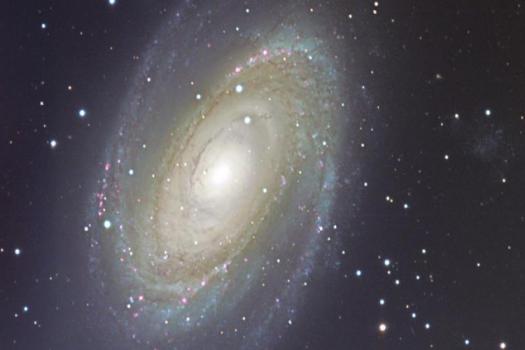Galaxy Sorting Challenge
- Lesson Plan
- Powerpoint
- Video
- Interactive
- Feedback Form
What are galaxies? Why do they look so different from each other? What can we learn from their shapes and structures? It only takes a keen eye and a creative mind to sort galaxies as early astronomers did.
MS-ESS1-2
Develop and use a model to describe the role of gravity within galaxies and the solar system.
Materials
- Galaxy sort images printed and laminated– one set for every student group (Download is below)
- Galaxy sort Lab Sheet if using. (Editable download is below)
- Frisbee for demonstrating spiral galaxy
- Football for demonstrating elliptical galaxy
Directions
- Follow the Galaxy Sorting instruction sheet which has lots of background information and suggestions for how to prompt your students during this activity. (Download is below)
| Attachment | Size |
|---|---|
| 236.23 KB | |
| 1.34 MB | |
| 13.62 KB | |
| 1.62 MB |
Notes for slides
1. The picture is a long exposure looking into one area of the sky from Hubble. It shows the vast quantity of galaxies in our Universe. Notice the different shapes, sizes, and colors. Galaxies are at varying and vast distances, which is why with a very long exposure even the furthest galaxies show up.
2. Our solar system is located in an arm of the Milky Way galaxy. Notice the black hole at the center. Gravity is what causes galaxies to form and stay together, there is more mass in the centers of galaxies. Nearly all the mass in the universe is concentrated in galaxies.
3. Some images that look like galaxies are actually nebula, where stars are born or supernova, where stars explode. Researchers need to sort through the sky to determine what they are seeing. Many galaxies have not been categorized or named yet, in fact there are citizen science programs that anyone can participate in to help categorize galaxies.
4. Pictures of galaxies from the sort images. How are they similar and different? Could our angle of sight make a galaxy look totally different? This is a good time to have your students do the galaxy sort activity to come up with their own creative sorting ideas.
5. Here are some ways scientists classify galaxies today. What can we learn from sorting and classifying galaxies?
A great concluding video on galaxy formation for older students
Want to look at telescope images of distant galaxies and help categorize them for the first time?
You can do just that at Galaxy Zoo a huge citizen science project.
Thus far, thousands of volunteers have helped researchers classify tens of thousands of galaxies.
What will you and your students find?

